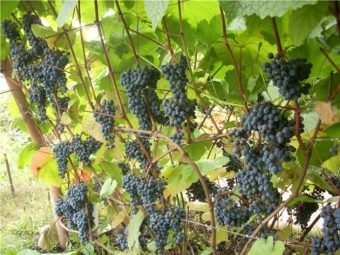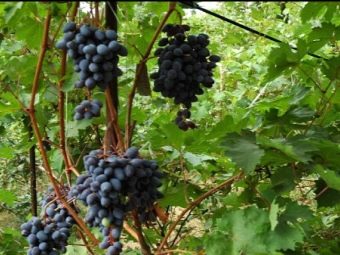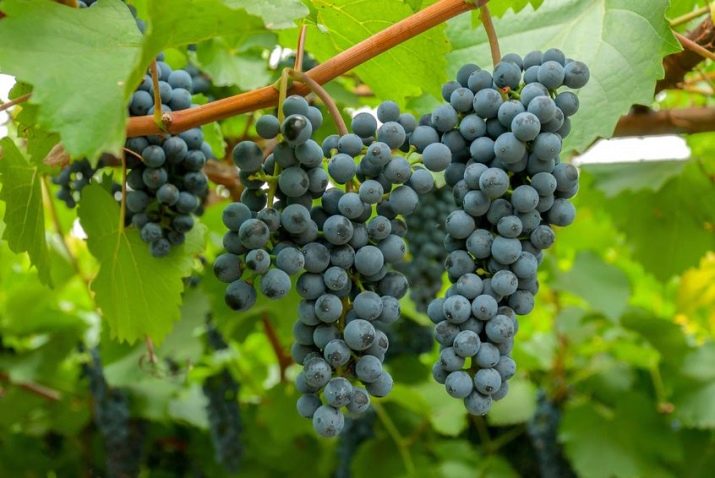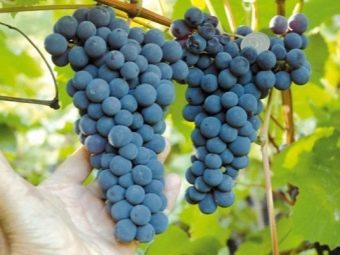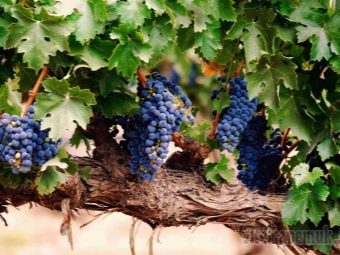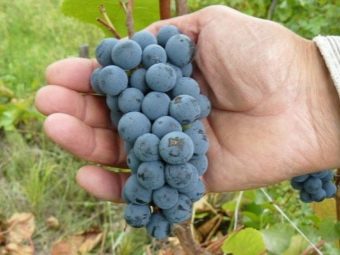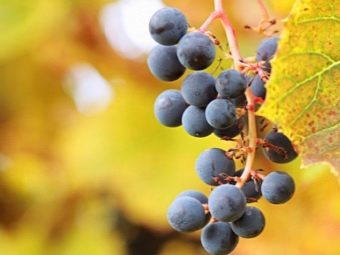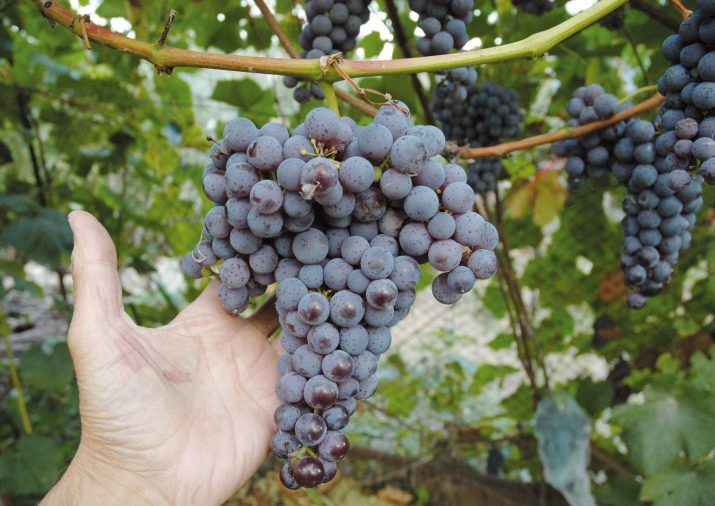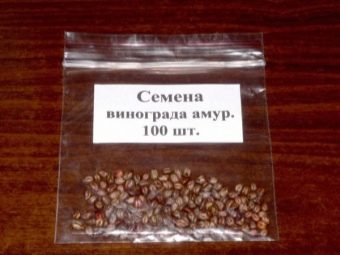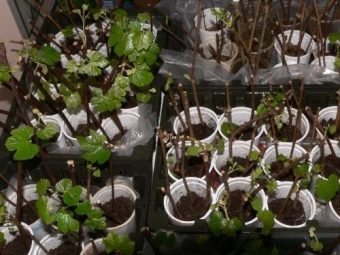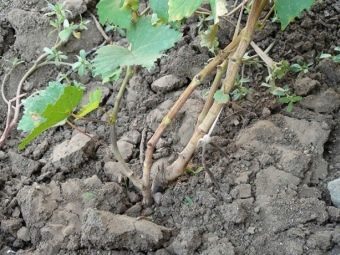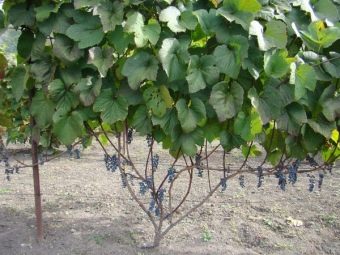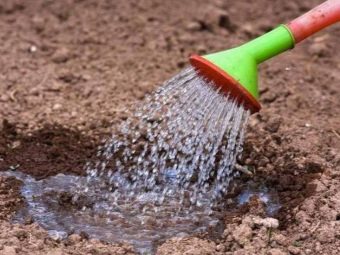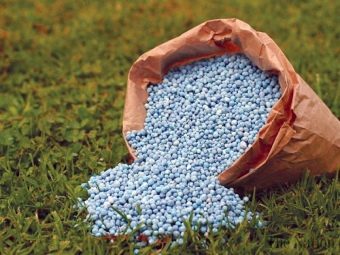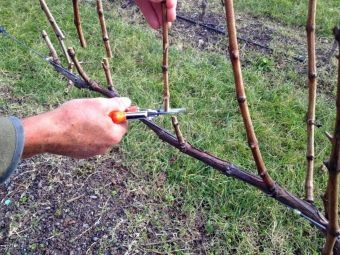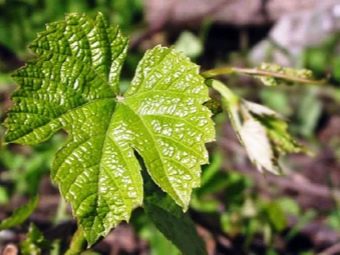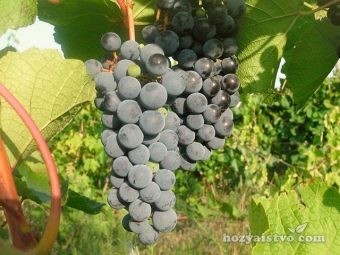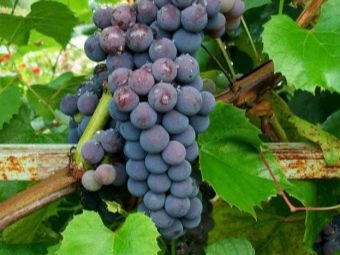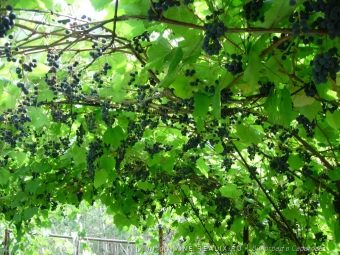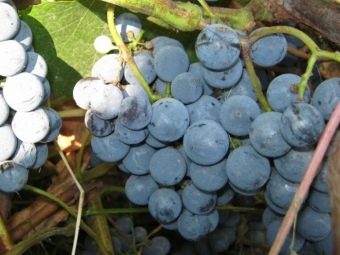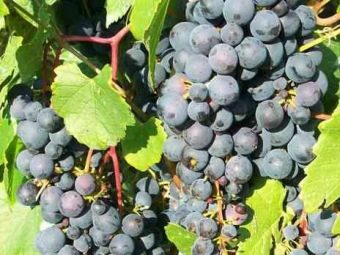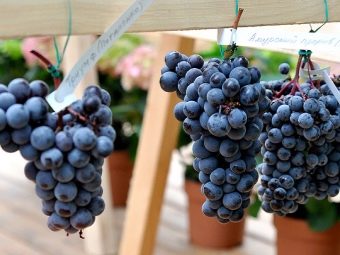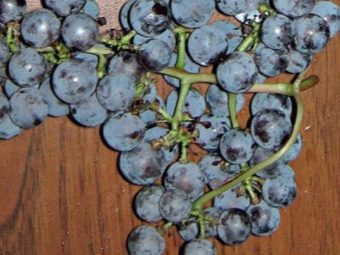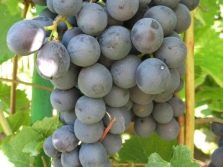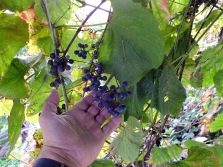Amursky grapes: varieties, planting and care
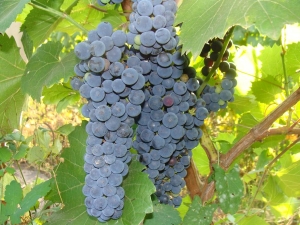
Such a diverse culture as grapes can be used in different ways.You can enjoy its beautiful berries or use it for decorative purposes, as they do in the south, or you can combine both. The Amursky grape variety is excellent for this. It is widely distributed in the east of Russia, as well as in such Asian countries as China and South Korea.
Grapes "Amur" - this is a special varieties obtained in the course of persistent selection. They combine a number of advantages, thanks to which they stand apart from other varieties. The main thing is that they are unpretentious plants created for growing in the north. This is their uniqueness.
The first to work on this species was the famous Russian scientist Michurin, who derived the following from the wild varieties:
- "Taigovy";
- "Siberian harvest";
- "Oriental";
- "Boars large."
Then by crossbreeding, he received another 3:
- "Russian Concord";
- "Metal";
- "Buytur".
Ivan Vladimirovich worked together with experienced gardeners. Ivan Pavlovich Potapenko was one of them. He was very good at grapes, and his sons continued his work. Potapenko became the creator of the described species and received about 20 of them. According to the classification, “Amursky” grapes were included in the plants of the Vitis group.
Characteristic
The appearance of this plant resembles a powerful vine, its diameter is about 20 centimeters. The fruits are kept on clusters. He firmly braids any surface and rises to an impressive height - up to 30 meters. The shoots of this plant develop incredibly quickly and can grow up to two and a half meters in a year. These grapes can be transplanted and cut without any problems. In addition, temperature unpretentiousness makes it so popular: it can survive at -40 degrees.
Liana differs bark dark color on the old and green or red on young shoots. In autumn, it acquires a reddish-brown hue, as do leaves, which can be up to 30 centimeters wide. In shape, they are elongated, oval, round, or form a set at the base. The Amur grapes are the most beautiful in the fall: then its large leaves are filled with colors and look great next to large dark fruits. With the beginning of May flowering begins. The flowers give nectar in large quantities, their smell is quite subtle.
Shoots grow in a year to two and a half meters. Amursky grows well and is therefore used for decorative decoration in squares and parks, since it can tolerate not the best environmental conditions in the city. He is not afraid of car exhaust, dust and smoke.
Berries at Amursky are round and rather large, up to one and a half centimeters in diameter. They ripen closer to the second half of September. The skin is thick with a black-bluish bloom. The taste is sour or sweet, it depends on the variety, the pulp is juicy. The average weight of the bunch is from 200 to 700 grams. The berries are excellent compotes and jams, of course, they can be used fresh. An analogue of coffee is made from seeds. Plants are most often of the same sex.
It is possible to propagate grapes in all possible ways: using cuttings, seeds or branches. Before that, you need to make a stratification. This process takes about four months.
Flowering grapes will begin in the 5th year, and this will require proper care. "Amur" grapes require a large amount of moisture: about 700 millimeters of rain per year.
If they are not enough, it is necessary to ensure regular watering. The variety is resistant to some diseases, but not to phylloxera. Mildew has immunity in only some forms.
The following positive qualities of "Amur" grapes can be distinguished:
- all varieties bear fruit abundantly;
- the vine ripens with the crop;
- high frost resistance and plasticity;
- strong vines and withstand heavy loads;
- yield does not decrease with time;
- pleasant taste, due to which of these varieties can make juices and wine.
Vegetative reproduction greatly accelerates the emergence of the crop.
Healing properties
Immediately it should be noted that the grapes are rich in vitamins. In addition, it contains such trace elements as:
- calcium;
- zinc;
- boron;
- iodine;
- phosphorus;
- magnesium;
- iron.
"Amur" grapes contain phytohormones, which are vital for human health. That is why it can be considered a cure. The fact is that with aging, the immunity is weakened, which makes the digestive, central nervous and cardiovascular systems more susceptible to disorders. "Amur" grapes contain the phytohormone resveratrol, which restores the body's defenses. It is grown during frost, which contributes to the accumulation of this hormone in the berries.
Accordingly, from the "Amur" grape turns out excellent wine with healing properties. Callus, that is, stem cells cuttings of grapes, contain phytohormones in excess. According to doctors, in one teaspoon of callus there is as much resveratrol as in 20 bottles of wine.
For the preparation of therapeutic tinctures need cuttings. The recipe of its preparation:
- cut the bark in different places, then moisten a cloth, wrap the ends of the cuttings in it and wrap in cellophane;
- in three weeks, callus will appear, which looks like nodules of white. Clean it off and dry it;
- grind to a powder consistency using a coffee grinder;
- one teaspoon of powder, pour 50 ml of vodka and insist for 14 days;
- Take one teaspoon tincture before or after a meal, diluted with warm water.
However, in order to get the required dose of resveratrol, it is not necessary to even drink wine, especially since you will have to use it a lot and need to do it every day.
Growing up
In any description of the variety "Amur" it is said that it is unpretentious, the gardener does not need sophisticated care. It grows well on any soil, but acidic is best suited. Amursky is propagated by cuttings and seeds, but the first variant is more productive. The gap between the pits should be at least one meter, as the bushes grow strongly. Special fertilizers are not required, only phosphorus and potassium when planting in the soil. Due to its cold resistance, this grape variety can grow not in the warmest regions, such as the Moscow region or Siberia.
You can plant wild plant, which is better grafted on the shank "Amur" grade. This will make the berries larger and sweeter due to the high sugar content. Wild shrubs are well cultivated, even without crossing. You just need to properly care for the vine: pinch, thin out and prune the kidneys. Variety of Vitis Amuretis is dioecious, with male and female individuals. Female flowers can be pollinated with pollen of any other varieties, which will make the fruit larger and more sugarier.
When choosing a place to plant, try to place the bush under the sun, so that during the day it will get enough ultraviolet radiation. Penumbra is also acceptable. For planting it is better to use seedlings, as the seeds will germinate for several years.
A good time to disembark is the second half of October. Loose and high acidity soils are best suited for it. Beware of excess lime in the soil, as this can destroy the shrub.
Liberally water the planting, then the first primordia will quickly take from the seeds. Liana grows well in drained soil, especially in the presence of highly acidic peat in the pit, cooked under a bush. Add three hundred grams of superphosphate and 100 grams of potassium sulfate to the well. Fill the pit with humus and compost.
Since the "Amur" variety quickly and tightly wraps around any support, do not plant it directly under the house and next to other fruit trees. Buy one male and several female varieties for planting.
The variety requires a pollinator, as if it is not available, you will receive fruits without seeds. This is relevant only for the wild species of the vine. Saplings of other varieties will be fruitless.
After planting for two years in the spring fertilize the bushes with nitrogen, phosphate in the fall, and combined fertilizers in the summer. This is a guarantee of high yield and good survival of the plant.
Watering is one of the most important components of good plant growth. The vine requires about 700 mm of rain per year. If they are not enough, then compensate them yourself. Water better with warm water, during the dry period twice a week, under normal conditions it will be enough once.
Do not water the grapes during flowering. Most water is required during fruit ripening. For the first time, water the plant in spring when the buds swell.
Useful tips
Try partial leaf removal during the growth of the vine. One or two weeks before harvesting, remove the lower leaves that turn yellow. Thus, you will increase the sugar content of the berries due to their better blowing with air and light.
Cut the grapes in autumn. This will allow the spring to lose less juice in the berries. Choose fruit shooters from young shrubs so that they do not touch the future shoots, do not shade them.
The Amursky grapes are considered to be frost-resistant, but nevertheless it is recommended to cover seedlings in the first two or three years. Teach them to cold gradually - wrap them all up later every winter, and open them earlier. Thus, they are well formed, will get optimal frost resistance, and low temperatures will not cause them damage.
Do not pay attention to the opinion of some "experts" that supposedly uncovered grapes have increased carcinogenicity. No scientific research has confirmed this.
"Amur" grapes can be used as an ornamental plant. In autumn, he will dissolve the foliage and reach the peak of his beauty.
Not everyone is excited about the taste of Vitis Labrusca grapes. Breeders in the course of crossing it turned out not only to soften it, but also to achieve a frost resistance indicator down to -40 degrees and strong resistance to diseases. These are varieties such as:
- "Far Eastern";
- Shasla Ramming;
- "Seaside";
- "Suputinsky."
"Amur" variety is ideal for inexperienced gardeners. It perfectly adapts to any weather conditions, undergoes transplants, and its fruits have excellent taste. Purchase seedlings in stores that give a guarantee for planting material.
Sorta
The "Amur" grapes have many different subspecies.
- "The Firstborn of Cupid." Wine variety bred Potapenko brothers. Ripens by the end of September, which refers to the average. Incredibly resistant to low temperatures, so it can grow even in the winter. However, in the first year of cultivation, it is necessary to cover an un-formed shrub.
- Breakthrough One. Novelty among the varieties of this grape. It has a strong liana with a diameter of about 2 cm. It matures at the end of August, which allows it to be considered early. Fruits are pink with a sweet taste. Contains more than 20 percent sugar in the composition. Odin has good immunity to disease. You can make wines and juices from its berries, they turn out very tasty.
- "Waldemar". Similar in appearance to many wild varieties. Differs in strong liana and large green leaves. The fruits themselves are small, black, ripen by the end of August.
- "Taiga". Externally and to taste reminds “One”. Young bushes require shelter with a polyethylene film for the winter, but in the second year they withstand cold to -32 degrees. High-yielding wine variety, which used to be one of the wild varieties.
- Amur Potapenko. The unique frost-resistant grade removed by Alexander Potapenko. Fruits are dark purple and rounded. Despite its unpretentiousness, so far, unfortunately, it is not very common. What plays a role here is that this variety does not tolerate heat over +25 degrees and therefore is not grown in warm regions.In the cold and more suitable conditions for it, people do not yet have enough experience to successfully grow it. High disease resistance. Ideal for wine due to its sugar content (25%).
- "Marinovsky". Berries ripen in the first half of September. The clusters are up to 15 cm in size, and the berries are long and medium-sized, the peel is dark blue. Unfortunately, their taste is not the brightest and sweetest.
- "Amethyst". Bisexual powerful plant. On one shoot 4 clusters ripen. The fruits ripen by the end of August. The berries are medium in size, round, sweet and juicy, as they contain a lot of sugar. Black skin. Fruit "Amethyst" in the second year. Immune to fungal infection and does not attract wasps.
- "Triumph". A plant with large dark pink berries, ripening in the second half of August. They taste great. Grapes are resistant to diseases, and its yield only increases every year.
- "Agat Don". Bisexual plant with the most succulent and nutritious fruits of Amur varieties. It has great gardeners reviews. Wines and juices are often made from this variety.
- "Neretinsky". It has a female flower and can be pollinated by any bisexual variety. The wine from its berries takes on a color that resembles chocolate. Fruits ripen in the second half of August. Due to the dense skin of the wasp it does not affect. Fruits in the second year, with each season, its yield increases.
- "Black frost-resistant". Tall bush. Ripens quickly, on average, for 110-130 days. Berries are dense, differ in special taste, and the thin skin is practically not felt during the use. This is a favorite variety of those who remove the seeds from the fruit during the meal.
On how to care for the Amur grapes, see the following video.

